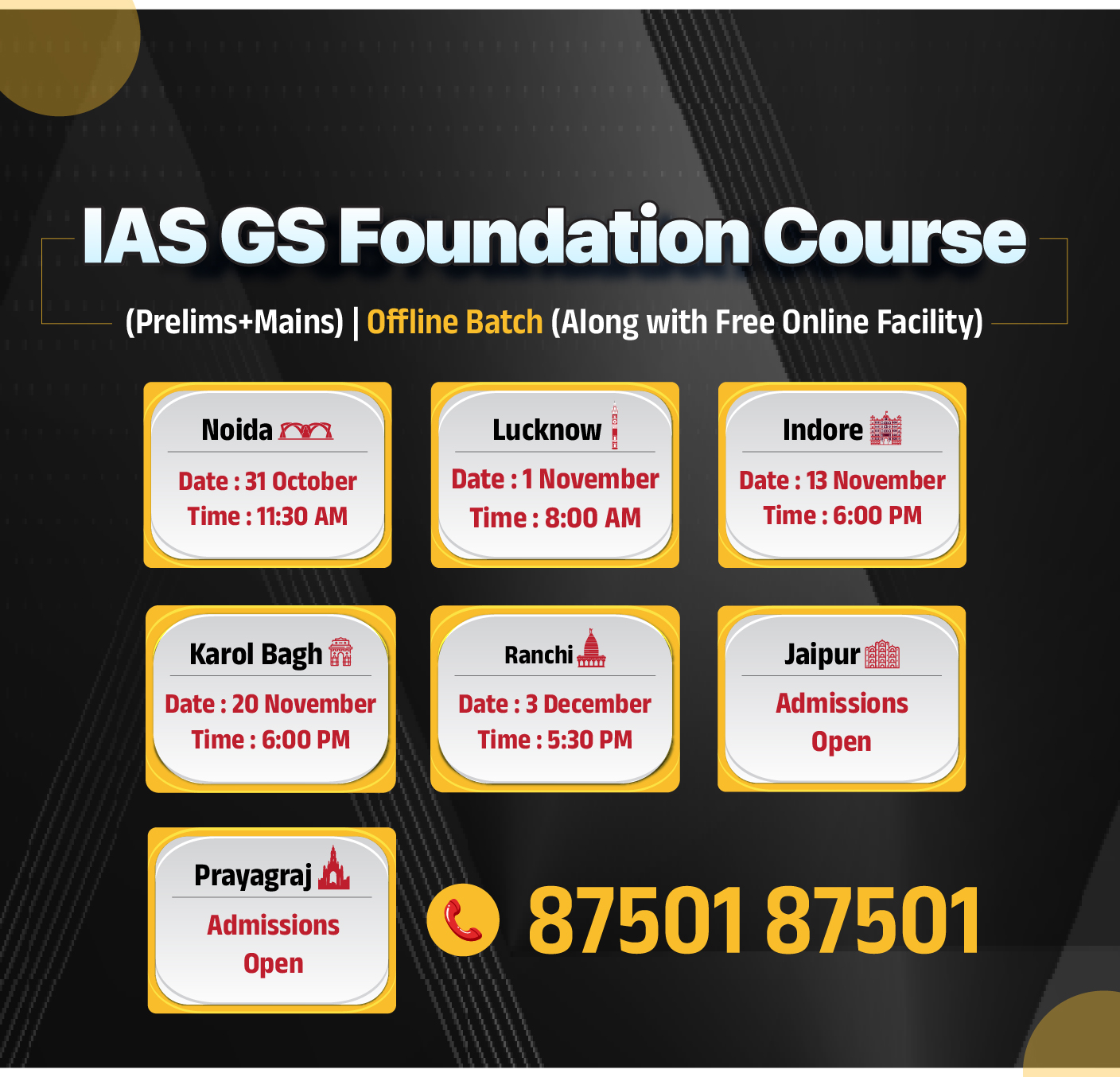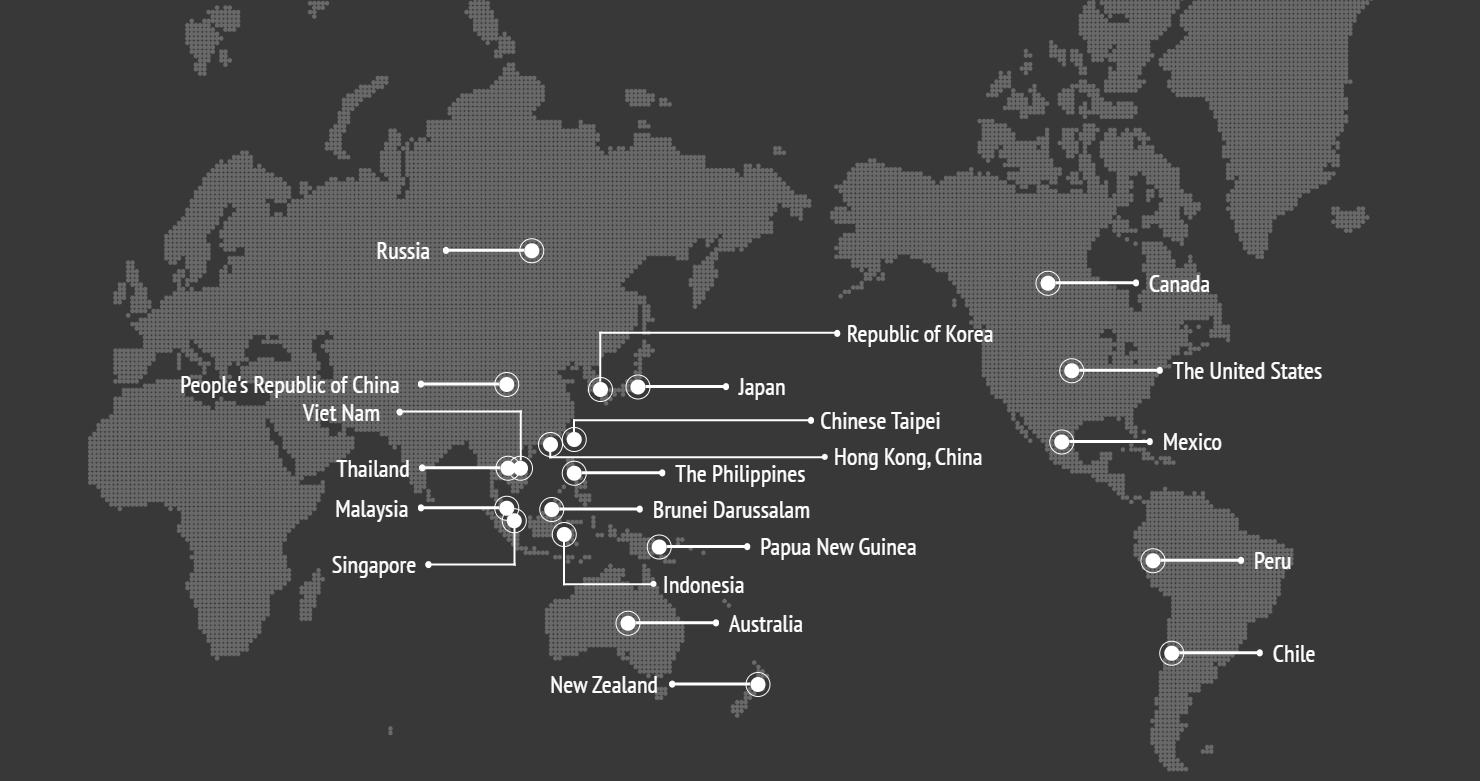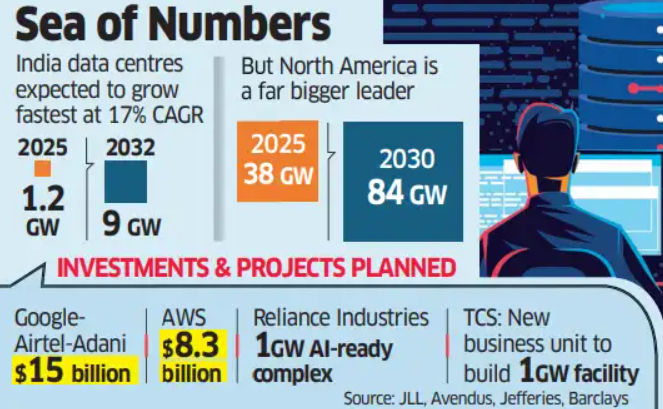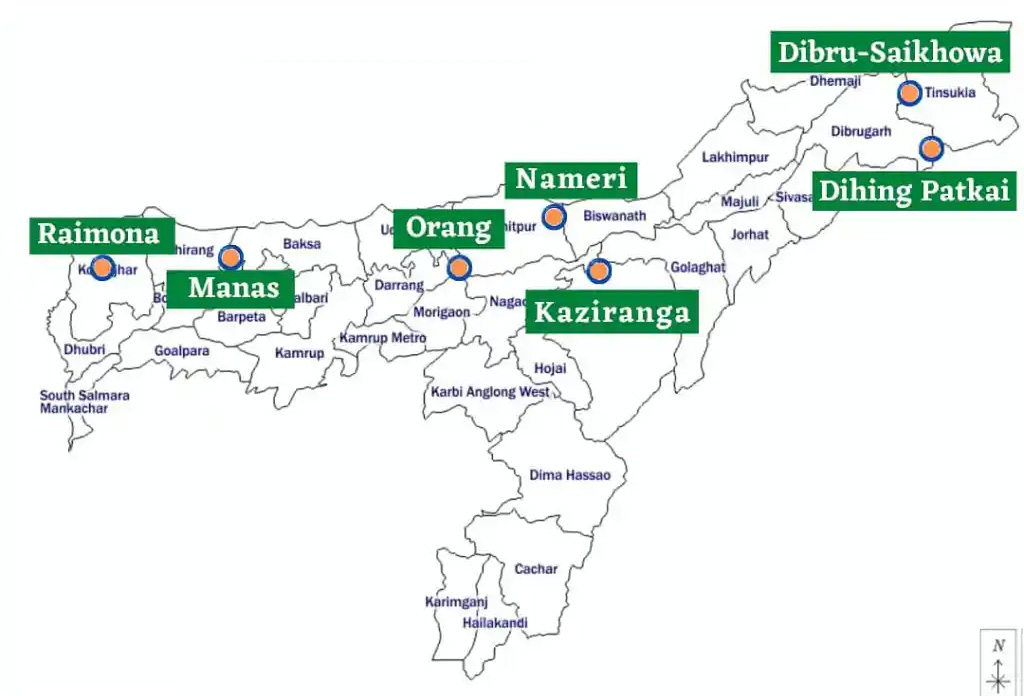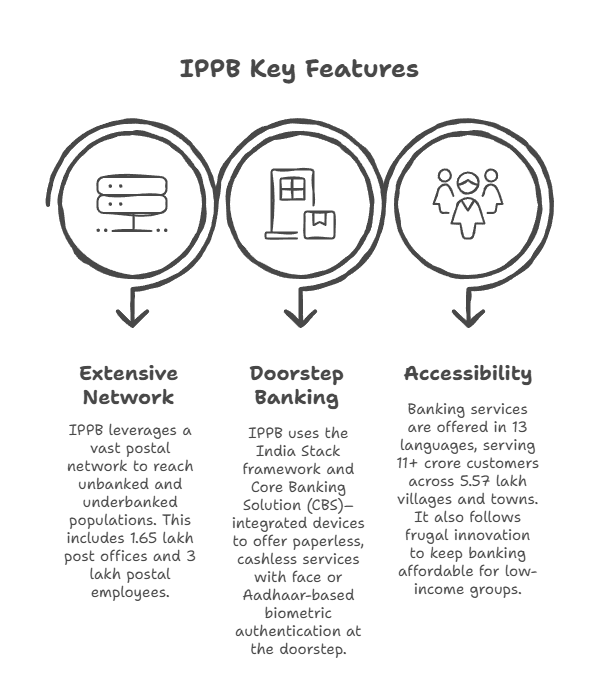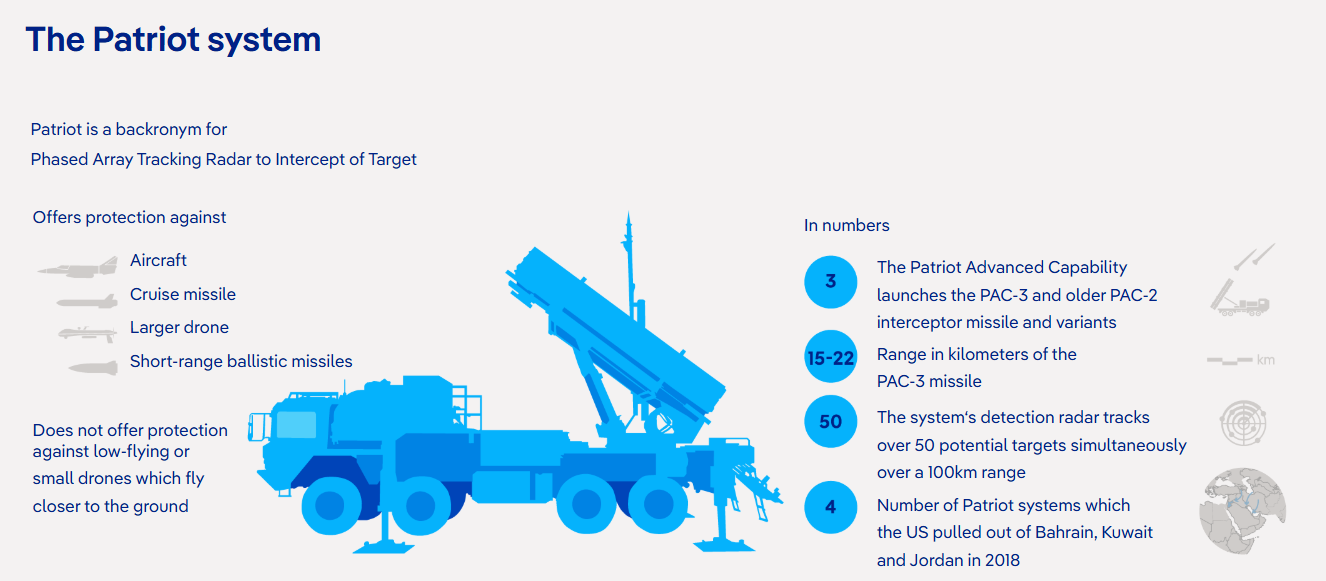International Relations
Asia-Pacific Economic Cooperation (APEC) Summit 2025
For Prelims: Asia-Pacific Economic Cooperation, Indo-Pacific Oceans Initiative (IPOI), Gyeongju Declaration (2025),
For Mains: India’s foreign policy in the Indo-Pacific, Role of APEC in shaping regional trade
Why in News?
The Asia-Pacific Economic Cooperation (APEC) Summit 2025, held in Gyeongju, South Korea, concluded with the adoption of the APEC Leaders’ Gyeongju Declaration (2025), reaffirming regional cooperation, digital transformation, and inclusive economic growth.
What are the Key Outcomes of APEC Summit 2025?
- Adoption of the Gyeongju Declaration (2025): The declaration reaffirmed APEC leaders’ commitment to inclusive economic growth, recognising the transformative impact of Artificial Intelligence (AI) and demographic shifts on labour markets.
- It outlined three priorities:
- Building the world’s most dynamic and interconnected regional economy.
- Preparing the region for digital and AI transformation
- Addressing shared challenges and ensuring growth benefits all
- It outlined three priorities:
- APEC Artificial Intelligence (AI) Initiative (2026-2030): The AI initiative seeks to drive inclusive, resilient growth by boosting innovation, cooperation, capacity building, and sustainable, energy-efficient AI development.
- Framework for Demographic Changes: Adopted by APEC, it addresses the region’s challenges of ageing populations, declining birth rates, and rapid urbanisation.
- It urges people-centred, intergenerational policies for resilient and inclusive growth, and promotes shared policy responses, social innovation, stronger employment, fiscal resilience, and a “silver economy” for ageing populations.
- Strengthened Economic and Technological Cooperation: China–South Korea renewed a currency swap and signed a cybersecurity MoU, US–China talks on the sidelines of the summit signaled easing tensions with plans to restart trade talks and cut select tariffs.
- Support for Inclusive, Rules-Based Multilateralism: Leaders reaffirmed the Putrajaya Vision 2040, stressing free and fair trade, predictable investment, and cooperation through multilateralism over fragmentation.
- Putrajaya Vision 2040 is a long-term strategic plan adopted by the APEC in 2020 to foster an open, dynamic, resilient, and peaceful Asia-Pacific community.
What is Asia-Pacific Economic Cooperation (APEC)?
- About: APEC founded in 1989, is a regional forum of 21 economies that promotes balanced, inclusive, sustainable, and innovative growth while advancing regional economic integration across the Asia-Pacific.
- It uses the term “economies” instead of “countries” to stress economic cooperation over political representation.
- APEC works to ease the movement of goods, services, investments, and people by streamlining customs, improving business conditions, and aligning regional regulations and standards to boost trade and integration.
- Members: Australia, Brunei Darussalam, Canada, Chile, China, China, Indonesia, Japan, Republic of Korea, Malaysia, Mexico, New Zealand, Papua New Guinea, Peru, the Philippines, Russia, Singapore, Chinese Taipei, Thailand, US, and Viet Nam.
- Its 21 member economies are home to around 2.95 billion people and represent approximately 62% of world GDP and 48% of world trade in 2021.
- India is not a member of APEC, it does have close political, economic, and strategic ties with many of its members.
- APEC Process: It operates on consensus and voluntary participation, with all members having an equal voice and decisions made through dialogue.
- The APEC process is supported by a permanent secretariat based in Singapore.
- India’s Interest in APEC: India views APEC as a gateway to deeper trade, investment, and regional integration in the Asia-Pacific.
- Membership would help India align with global trade standards, simplify procedures, and attract more foreign investment and complement national initiatives like ‘Make in India’ and ‘Digital India’.
- Reasons for the Decline in India’s Bid for APEC Membership: India’s bid for APEC membership declined due to the forum’s consensus-based admission process, a freeze on new members, and concerns over India’s protectionist trade policies and regulatory complexity.
- Geopolitical factors, including China’s quiet opposition, has kept India out of the forum despite its applications in 1991 and 1997.
- While India has joined APEC meetings as a guest or observer, its membership remains off the table.
How APEC’s Evolving Agenda Aligns with India's Indo-Pacific Vision?
- Shared Vision: Both APEC and India’s Indo-Pacific strategy emphasise a free, open, and inclusive regional order, rooted in transparency, connectivity, and respect for international rules.
- Focus on Connectivity and Integration: APEC’s agenda on supply-chain resilience, infrastructure, and digital connectivity complements India’s efforts under the Act East Policy and initiatives like MAHASAGAR and the Indo-Pacific Oceans Initiative (IPOI).
- Digital and Innovation Synergy: APEC’s new emphasis on AI, digital economy, and innovation-driven growth aligns with India’s domestic programmes like Digital India, Startup India, and IndiaAI strengthening India’s role as a digital bridge in the region.
- As APEC expands its agenda beyond trade, it offers India opportunities to engage informally with regional economies and shape the Indo-Pacific’s economic architecture.
Conclusion
The 2025 APEC Summit in Gyeongju marked the convergence of technology and geopolitics in the Asia-Pacific. Through the Gyeongju Declaration and the AI Initiative, it set the course for sustainable and equitable AI-driven growth across the region.
|
Drishti Mains Question: Q. Examine how Asia-Pacific Economic Cooperation (APEC) evolving agenda reflects the transformation of global economic governance. |
Frequently Asked Questions (FAQs)
1. What is the APEC Leaders’ Gyeongju Declaration (2025)?
It is the outcome document of the 2025 APEC Summit held in Gyeongju, South Korea, reaffirming leaders’ commitment to inclusive economic growth, digital and AI transformation, and regional economic integration under the Putrajaya Vision 2040.
2. What is the APEC Artificial Intelligence (AI) Initiative (2026–2030)?
A six-year framework adopted at the APEC 2025 Summit to harness AI’s potential for inclusive and resilient economic growth through innovation, and sustainable AI infrastructure.
3. What is the APEC Collaborative Framework for Demographic Changes?
It is a regional plan to address ageing populations, declining birth rates, and rapid urbanisation through intergenerational, people-centred policies promoting “silver economy.”
4. How does APEC operate as an organisation?
APEC functions on consensus and voluntary cooperation, not binding treaties, with all 21 member economies having equal voice and decisions made collectively through dialogue.
UPSC Civil Services Examination, Previous Year Question
Prelims
Q1. Consider the following pairs: (2009)
|
Organization |
Location of Headquarters |
|
1. Asian Development Bank |
Tokyo |
|
2. Asia-Pacific Economic Cooperation |
Singapore |
|
3. Association of SouthEast Asian Nations |
Bangkok |
Which of the above pairs is/are correctly matched?
(a) 1 and 2 only
(b) 2 only
(c) 2 and 3 only
(d) 3 only
Ans: (b)
Q2. India is a member of which among the following? (2015)
- Asia-Pacific Economic Cooperation
- Association of South-East Asian Nations
- East Asia Summit
Select the correct answer using the code given below:
(a) 1 and 2 only
(b) 3 only
(c) 1, 2 and 3
(d) India is a member of none of them
Ans: (b)


Governance
Reforming Centrally Sponsored Schemes (CSS)
For Prelims: Comptroller and Auditor General of India (CAG), Centrally Sponsored Schemes (CSS), SDGs, MGNREGA, Mid-Day Meal, Special Category States, Supreme Court, Election Commission, Direct Benefit Transfer (DBT).
For Mains: Centrally Sponsored Schemes (CSS): Implementation Challenges and Reforms, Role of the Comptroller and Auditor General (CAG): Ensuring Financial Integrity and Accountability.
Why in News?
The Comptroller and Auditor General of India (CAG) has set up a committee to tackle challenges in Centrally Sponsored Schemes (CSS) and strengthen their budgeting, accounting, and payment systems.
- It will review how states reflect and integrate CSS allocations with SDGs, aiming for uniform and transparent budgeting and accounting practices nationwide.
What are Centrally Sponsored Schemes (CSS)?
- About: CSSs are schemes that are jointly funded by the Centre and States, implemented by the States, and focus on areas listed under the State and Concurrent Lists of the Constitution.
- They are designed to supplement State efforts by leveraging the Centre’s stronger financial capacity, with all fund transfers routed through the Consolidated Fund of the State.
- India currently runs 54 CSS and 260 Central Sector Schemes, with 8 paise of every rupee spent on CSS.
- Categories: CSS is divided into three main categories:
- Core of the Core Schemes: These are the most essential programmes aimed at social inclusion and protection, such as MGNREGA.
- Core Schemes: Focused on key developmental sectors like agriculture, infrastructure, education, health, and rural development, examples include the Mid-Day Meal (School Nutrition Programme) and Pradhan Mantri Gram Sadak Yojana.
- Optional Schemes: States have the flexibility to implement these based on their priorities, such as the Border Area Development Programme.
- Financing: The Centre allocates around 10% of its budget to CSS, with the Centre-State funding ratio varying as follows: 60:40 for most schemes, 80:20 for select schemes, and 90:10 for North-Eastern and Special Category States.
- Difference Between CSS and Central Sector Schemes:
|
Basis |
Central Sector Schemes (CS) |
Centrally Sponsored Schemes (CSS) |
|
Funding |
100% funded by the Central Government |
Funded by both Centre and States in fixed ratios (e.g. 90:10, 75:25, 60:40) |
|
Implementation |
Implemented directly by Central Government machinery or its agencies |
Implemented by State/UT Governments |
|
Subject Area |
Based mainly on subjects under the Union List |
Based on subjects under the State List |
|
Financial Transfer |
No funds are transferred to States; expenditure made by the Centre |
Funds are transferred to States for implementation |
|
Objective |
To execute programmes of national importance directly by the Centre |
To assist States in implementing welfare and development programmes |
|
Examples |
Space Research Programme, Central Armed Police Forces, BharatNet |
MGNREGA, National Health Mission, Mid-Day Meal Scheme |
Comptroller and Auditor General (CAG)
- About: Established under Article 148 of the Indian Constitution, the CAG heads the Indian Audit and Accounts Department (IA&AD).
- Governed by the CAG’s (Duties, Powers, and Conditions of Service) Act, 1971, amended in 1976, 1984, and 1987.
- Considered a key pillar of Indian democracy, alongside the Supreme Court, Election Commission, and UPSC.
- Appointment and Tenure: Appointed by the President of India for a 6-year term or until 65 years of age, the CAG takes an oath of impartiality and may resign by submitting to the President.
- Removal: He can be removed only by the President, following the same procedure as a Supreme Court judge — through a special majority resolution in both Houses of Parliament for proved misbehaviour or incapacity.
- Role and Duties: The CAG, as Parliament’s agent, ensures public funds are used legally, efficiently, and for intended purposes.
- It conducts legal, regulatory, and propriety audits to assess legality, economy, and prudence in expenditure.
- Unlike the CAG in Britain, India’s CAG acts only as an auditor, not a comptroller.
- Independence: The CAG can be removed only through a constitutional process, not at the President’s pleasure.
- The CAG shall not be eligible for further office either under the Government of India or under the Government of any State after he has ceased to hold his office.
What are the Key Issues Related to Centrally Sponsored Schemes (CSS)?
- Lack of Transparency: A major challenge is the unclear representation of CSS funds in state budgets, where Centre and State shares are not distinctly shown, hindering alignment with broader goals like the SDGs and tracking of total public spending.
- Inconsistent accounting, overlapping reports, weak monitoring, and poor audits undermine impact assessment.
- Unpredictable Flow of Funds: The flow of funds from the Centre to the States and implementing agencies is often irregular and unpredictable, causing project delays, idle resources, and a rush to spend funds at year-end, which affects quality.
- Inflexible Allocation: Rigid budget allocations prevent states from adjusting funds to local needs, as the “one-size-fits-all” approach overlooks regional disparities.
- Challenges in Payment Systems: Despite Direct Benefit Transfer (DBT) reforms, payment delays persist due to procedural bottlenecks, verification errors, and tech glitches.
- Inaccurate beneficiary data, banking issues, and the lack of real-time tracking lead to leakages, grievances, and poor accountability.
What Reforms are Needed to Improve the Effectiveness of CSS?
- Unified & Transparent Budget Headings: Adopt a standardized budget structure for all CSS to clearly show Central and State shares. Mandate SDG-linked budgeting to align expenditures with specific development outcomes.
- Forward-Looking Funding: Inform states of annual allocations in advance, adopt a 3-year rolling fiscal framework for major CSS, and link 10–15% of funds to performance indicators to ensure better planning, project continuity, and result-oriented implementation.
- Standardized Accounting Codes: Develop a National Accounting Template for CSS with uniform classification codes across states to enable data consolidation, inter-state comparison, and a clear audit trail for the CAG.
- Mandatory Integration with State IFMIS: Integrate all CSS transactions with State Integrated Financial Management and Information System (IFMIS) for accurate accounting while maintaining an Aadhaar-linked beneficiary database.
- Enable authentication and grievance redressal through Common Service Centers (CSCs).
- Leveraging Technology for Efficiency: Leverage AI and data analytics to track fund flows, detect anomalies, and predict spending trends, while enabling officials to record expenditures and progress through mobile-based real-time monitoring.
Conclusion
The CAG's committee marks a critical step towards reforming CSS financial governance. By addressing opaque budgeting, fragmented accounting, and inefficient payments, it aims to enhance transparency, ensure predictable fund flow, and strengthen outcome-oriented expenditure, ultimately improving the efficacy of massive public spending for national development goals.
|
Drishti Mains Question: Q. Examine the challenges in the implementation of Centrally Sponsored Schemes (CSS) and suggest institutional reforms to improve fiscal transparency and service delivery. |
Frequently Asked Questions (FAQs)
1. What are Centrally Sponsored Schemes (CSS)?
CSS are jointly funded Centre-State programmes implemented by states to supplement state efforts in concurrent and state subjects, routed through the Consolidated Fund of the State.
2. What constitutional role does the CAG play in auditing Centrally Sponsored Schemes (CSS)?
As the supreme audit institution of India established under Article 148, the CAG's role is to conduct legal, regulatory, and propriety audits of CSS expenditures to ensure legality, efficiency, and prudence in the use of public funds.
3. How do Centrally Sponsored Schemes (CSS) differ from Central Sector Schemes?
CSS are jointly funded by the Centre and States and implemented by states, while Central Sector Schemes are fully funded and directly implemented by the Central Government.
UPSC Civil Services Examination, Previous Year Question (PYQ)
Prelims
Q. In India, other than ensuring that public funds are used efficiently and for intended purpose, what is the importance of the office of the Comptroller and Auditor General (CAG)? (2012)
- CAG exercises exchequer control on behalf of the Parliament when the President of India declares national emergency/financial emergency
- CAG reports on the execution of projects or programmes by the ministries are discussed by the Public Accounts Committee.
- Information from CAG reports can be used by investigating agencies to press charges against those who have violated the law while managing public finances.
- While dealing with the audit and accounting of government companies, CAG has certain judicial powers for prosecuting those who violate the law.
Which of the statements given above is/are correct?
(a) 1, 3 and 4 only
(b) 2 only
(c) 2 and 3 only
(d) 1, 2, 3 and 4
Ans: (C)
Mains
Q1. “The Comptroller and Auditor General (CAG) has a very vital role to play.” Explain how this is reflected in the method and terms of his appointment as well as the range of powers he can exercise. (2018)
Q2. Exercise of CAG’s powers in relation to the accounts of the Union and the States is derived from Article 149 of the Indian Constitution. Discuss whether audit of the Government’s policy implementation could amount to overstepping its own (CAG) jurisdiction.(2016)

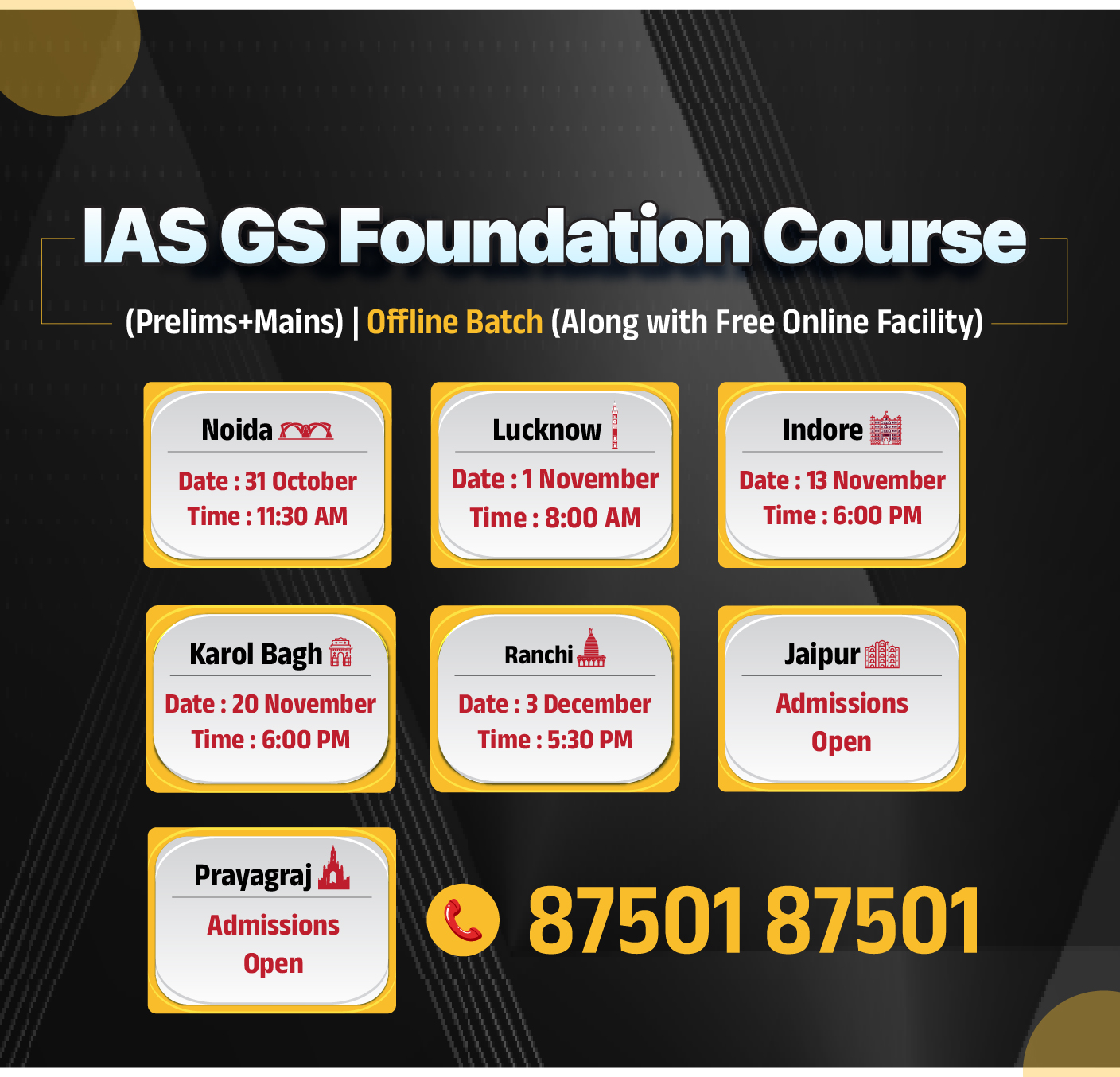
Science & Technology
India’s Data Centre Capacity Set to Reach 9 GW by 2032
For Prelims: Data Centers, Artificial Intelligence (AI), 5G, Digital Personal Data Protection Act 2023, Reserve Bank of India
For Mains: India Initiatives related to data centres, Opportunities and Challenges in data centre industry
Why in News?
India’s data centre industry is projected to expand significantly, with capacity expected to increase from 1.2 GW in 2025 to 9 GW by 2032, registering a compound annual growth rate (CAGR) of 17%.
What are Data Centres?
- About:
- Data centres are specialised facilities that store, manage, and process large volumes of electronic data.
- They house critical Information Technology (IT) infrastructure, including servers, storage devices, networking equipment, and systems for cooling, power supply, and security.
- These centres are designed to offer reliable, scalable, and secure environments for managing data essential to modern digital operations-ranging from cloud computing to artificial intelligence applications.
- Market Size and Growth: Despite producing 20% of the world’s data, India currently holds only 3% of global data centre capacity, highlighting vast potential for expansion.
- Geographical Distribution: India currently hosts around 150 data centres, with major players such as Amazon Web Services (AWS), Microsoft Azure, Google Cloud, etc. leading the market.
- Mumbai accounts for over 50% of India’s data centre, and emerging hubs include Ahmedabad, Pune, and Visakhapatnam (Vizag).
What are Key Reasons Behind the Growth Of Data Centres in India?
- Expanding Digital Infrastructure: With 751 million internet users and 52.4% penetration in 2024, India’s growing digital ecosystem is driving massive demand for data generation, storage, and processing facilities.
- AI, 5G, and IoT Growth: Rapid expansion of AI applications, generative models, and 5G networks is expected to triple data consumption, necessitating faster and more efficient data centres.
- Edge Computing: Rising use of IoT and 5G has boosted demand for edge data centres that process data closer to users, reducing latency and improving real-time efficiency.
- Economic and Employment Impact: The sector could generate over ₹50,000 crore in economic activity by FY27, spurring investments, job creation, and real estate growth (Crisil Ratings).
- Policy and Data Localisation: Laws like the Public Records Act (1993), RBI’s 2018 directive, and the Digital Personal Data Protection Act (2023) mandate local data storage to safeguard privacy and national interests.
- National Sovereignty: Domestic data storage enhances India’s control over sensitive information, strengthening digital security and strategic autonomy.
Government Initiatives to Promote Data Centres
- Digital India (2015): Digital India strengthens online infrastructure and digital services, laying the foundation for large-scale data handling.
- National Informatics Centre (NIC): Operates advanced National Data Centres to support e-governance.
- Infrastructure Status for Data Centres: Centres with an IT load above 5 MW now enjoy infrastructure status, improving access to loans and incentives.
- State-Level Policies: For instance, Maharashtra’s IT & ITES Policy 2023 offers targeted incentives to promote regional data centre development.
What are the Key Challenges in Establishing a Data Centre in India?
- Infrastructure and Regional Gaps: India’s data centre expansion is hindered by unreliable power supply, poor connectivity, and high operational costs.
- Limited undersea cables controlled by foreign entities create dependency. High cooling needs in hot climates further raise costs, and metros like Mumbai dominate due to inadequate infrastructure in smaller cities.
- Environmental Sustainability: The sector’s rapid growth poses major environmental concerns due to high energy and water consumption.
- Data centres used 1.5% of global electricity in 2024, projected to reach 3% by 2030. India’s coal-based grid increases carbon emissions, while water-intensive cooling systems strain resources in drought-prone areas.
- Skill and Security Challenges: A shortage of trained professionals and rising cyber threats endanger operational reliability.
- Large data centres are prime targets for cyberattacks and physical sabotage, highlighting the need for stronger cybersecurity and workforce development.
- Global Competition and Trade Risks: India faces strong competition from countries with advanced data ecosystems like China and Singapore.
- Stringent localisation norms could lead to reciprocal trade barriers against Indian IT firms, raise service costs, and reduce competition, potentially inviting WTO disputes.
- High Capital Investment: The sector requires massive financial commitments with uncertain returns.
- Building 40 GW of data centre capacity by 2030 needs around USD 400 billion, but long payback periods of 10–15 years may deter investors and increase consumer costs.
What Steps can be taken to Address Challenges Related to Data Centres in India?
- Infrastructure Upgradation: Invest in reliable, low-cost, and renewable power infrastructure by offering subsidized electricity tariffs and enabling direct power procurement from DISCOMs or renewable sources like solar and wind.
- Policy Refinement: Simplify land acquisition and approval processes while offering incentives such as tax breaks for firms storing data in India and promoting green data centers with liquid cooling and energy-efficient designs.
- Regional Diversification: Establish dedicated data center zones in Tier-2 and Tier-3 cities, particularly in cooler regions like Shimla, Dehradun, and Chandigarh, to reduce cooling costs and promote balanced regional growth.
- Human Resource Development: Launch a National Data Center Academy to train professionals in AI, cloud computing, and cybersecurity, supported by collaborations with global technology companies.
- Sustainable Practices: Encourage green and energy-efficient technologies, expand undersea cable stations, and build a National Fiber Corridor to ensure connectivity and sustainability in data infrastructure.
Conclusion
India stands at the cusp of becoming a global data centre powerhouse, driven by its expanding digital economy, rapid AI integration, and 5G rollout. However, addressing challenges related to infrastructure, sustainability, and skill development remains crucial. With supportive government policies and sustained investment, India can emerge as a leading “Data Nation” by 2032, strengthening its position in the global digital ecosystem.
|
Drishti Mains Question Q. Discuss the significance of data centres in driving India’s digital economy and evaluate the challenges hindering their growth. |
Frequently Asked Questions
Q. What is a data centre?
A data centre is a specialised facility that stores, manages, and processes digital data using servers, networking equipment, and power infrastructure.
Q. Why are data centres important for India?
They support India’s digital economy by enabling cloud computing, e-governance, AI applications, and secure data storage within the country.
Q. What is driving the growth of data centres in India?
Rising digitalisation, AI and 5G expansion, data localisation laws, and large-scale investments from global and domestic tech companies.
Q. What challenges hinder data centre growth in India?
High energy costs, infrastructure gaps, skill shortages, cybersecurity threats, and environmental sustainability concerns limit rapid sectoral expansion.
UPSC Civil Services Examination, Previous Year Questions (PYQs)
Q. With the present state of development, Artificial Intelligence can effectively do which of the following? (2020)
- Bring down electricity consumption in industrial units
- Create meaningful short stories and songs
- Disease diagnosis
- Text-to-Speech Conversion
- Wireless transmission of electrical energy
Select the correct answer using the code given below:
(a) 1, 2, 3 and 5 only
(b) 1, 3 and 4 only
(c) 2, 4 and 5 only
(d) 1, 2, 3, 4 and 5
Ans: (b)


Important Facts For Prelims
Rowmari-Donduwa Wetland Complex
Why in News?
There is a demand for the inclusion of the Rowmari–Donduwa Wetland Complex in Assam as a Ramsar Site, recognizing its remarkable biodiversity and ecological significance.
What is the Rowmari–Donduwa Wetland Complex?
- Location: It is located within the Laokhowa Wildlife Sanctuary (WLS), a part of the Kaziranga Tiger Reserve in Assam. It is an interconnected floodplain–marsh system spanning about 2.5 to 3 square kilometres.
- Biodiversity: It hosts a higher diversity of bird species compared to the two existing Ramsar sites in Northeast India — Deepor Beel (Assam) and Loktak Lake (Manipur).
- The 2025 Kaziranga Wetland Bird Census recorded 47,000+ birds from 75–88 species, including Knob-billed Duck, Black-necked Stork, and Ferruginous Pochard.
- Ramsar Site Designation: The Rowmari–Donduwa Wetland Complex, with its rich birdlife, diverse habitats, and strong ecological links, is an ideal candidate for Ramsar Site designation.
What is Ramsar Convention?
- About: The Ramsar Convention, signed in 1971 at Ramsar, Iran, is an international treaty for the conservation and wise use of wetlands. It aims to protect wetland ecosystems through national and global cooperation.
- India and Ramsar: India, a member since 1982, has 94 Ramsar sites (as of November 2025), the highest in Asia, supporting biodiversity and livelihoods.
- The first Ramsar Site designated in India was Chilika Lake, Odisha, in 1981.
- Currently, Tamil Nadu leads with the highest number of Ramsar Sites, followed by Uttar Pradesh.
- Approximately 10% of India’s total wetland area is currently designated under the Ramsar framework.
- Criteria for Ramsar Site Designation: There are 9 criteria for identifying Wetlands of International Importance under the Ramsar Convention. Important ones are:
- Ecological Uniqueness & Biodiversity: Represents a rare wetland type and supports key or endangered species.
- Life Cycle Support & Refuge: Provides habitat during critical stages or refuge in adverse conditions.
- Avian Importance: Hosts 20,000+ waterbirds or 1% of a waterbird population.
- Aquatic Significance: Sustains diverse fish species, serving as a spawning, nursery, or migration ground.
Laokhowa and Burhachapori WLS
- Location: Situated between Kaziranga (east), Orang (west), and Pobitora (west), the complex forms a vital migration corridor between Kaziranga and Orang National Parks.
- It serves as a Buffer Zone of Kaziranga Tiger Reserve, with the Brahmaputra River marking its northern boundary and creating diverse river islands (chars).
- Biodiversity: Home to endangered mammals like the Great Indian One-horned Rhinoceros, Royal Bengal Tiger, Asiatic Elephant, and Asiatic Water Buffalo, along with otters and pangolins.
- Rich in birdlife, including Bengal Florican, Greater and Lesser Adjutant, and Black-necked Stork; the Brahmaputra River supports the Gangetic River Dolphin.
- Ecosystem: Features a diverse mix of grasslands, woodlands, wetlands, and riverine islands.
Kaziranga National Park
- About: Established in 1908, the park is located in Assam’s Golaghat and Nagaon districts. It was declared a National Park in 1974, inscribed as a UNESCO World Heritage Site in 1985, and designated a Tiger Reserve in 2006.
- Fauna: Home to over 2,200 Indian One-horned Rhinos—about two-thirds of the global population—the park also sustains tigers, elephants, wild water buffalo, and bears.
- It supports rich aquatic life, including the endangered Ganges River Dolphin, and serves as a vital refuge for resident and migratory birds.
Frequently Asked Questions (FAQs)
1. What is the Rowmari–Donduwa Wetland Complex?
The Rowmari–Donduwa Complex is a 2.5–3 km² floodplain–marsh within Laokhowa WLS, part of the Kaziranga landscape; it supports 120+ bird species and high avian counts, making it ecologically significant and a strong candidate for Ramsar designation.
2. How does Laokhowa–Burhachapori contribute to wildlife conservation in Assam?
Laokhowa–Burhachapori functions as a buffer and corridor connecting Kaziranga with adjacent PAs, supporting large mammals (rhino, elephant, tiger), wetlands for migratory birds, and riverine species like the Gangetic dolphin.
3. What distinguishes Kaziranga National Park's global conservation status?
It is a UNESCO World Heritage Site and Tiger Reserve, holding the world's largest population of the endangered Indian one-horned rhinoceros.
UPSC Civil Services Examination, Previous Year Questions (PYQs)
Prelims
Q. Consider the following pairs: (2013)
| National Park | River flowing through Park |
| 1. Corbett National Park | Ganga |
| 2. Kaziranga National Park | Manas |
| 3. Silent Valley National Park | Kaveri |
Which of the above pairs is/are correctly matched?
(a) 1 and 2
(b) 3 only
(c) 1 and 3
(d) None
Ans: (d)
Q. Among the following Tiger Reserves, which one has the largest area under “Critical Tiger Habitat”? (2020)
(a) Corbett
(b) Ranthambore
(c) Nagarjunasagar-Srisailam
(d) Sundarbans
Ans: (c)


Important Facts For Prelims
IPPB–EPFO MoU for Jeevan Pramaan Services
Why in News?
India Post Payments Bank (IPPB) has signed an MoU with the Employees’ Provident Fund Organisation (EPFO) to provide doorstep Digital Life Certificates (Jeevan Pramaan) services for pensioners under the Employees’ Pension Scheme, 1995 a key move toward inclusive and technology-driven pension delivery.
Jeevan Pramaan
- About: Jeevan Pramaan is an Aadhaar-based, biometric-enabled Digital Life Certificate (DLC) for pensioners. It verifies the pensioner’s existence and ensures continuous pension credit into their bank account.
- Eligibility: Pensioners from the central, state, or any other government agency are eligible to use this service.
- However, it is not a one-time requirement; the certificate must be submitted every year.
- Implementation: It is implemented by the Ministry of Personnel, Public Grievances and Pensions, through the Department of Pension and Pensioners’ Welfare (DoPPW).
What is the India Post Payments Bank (IPPB)?
- About: IPPB, launched in 2018, operates under the Department of Posts, Ministry of Communications, and is headquartered in New Delhi, India.
- It aims to provide affordable and accessible banking services, especially in rural and underserved areas, by using India Post’s vast network to deliver doorstep financial inclusion across the country.
- Key Features:
- Innovation and Partnerships:
- Fincluvation Initiative: A platform launched by IPPB to collaborate with fintech startups, co-create solutions, and innovate for financial inclusion.
- WhatsApp Banking Services: It allows customers to access banking services easily on WhatsApp.
- Ria Money Transfer Partnership: Provides international inward money transfer services, initially available at over 25,000 Post Office locations.
- Significance: It plays a key role in advancing financial inclusion, especially in rural and remote areas.
- By offering doorstep banking through postmen and Gramin Dak Sevaks, it bridges the urban–rural divide and empowers citizens across all sections of society.
- India’s postal system with India Post Office and IPPB Online is now the world’s largest doorstep banking network, ensuring dignity and empowerment.
- Its focus on digital financial services supports the Digital India mission and promotes a cashless, inclusive economy.
- By offering doorstep banking through postmen and Gramin Dak Sevaks, it bridges the urban–rural divide and empowers citizens across all sections of society.
Frequently Asked Questions (FAQs)
1. What is Jeevan Pramaan?
Jeevan Pramaan is an Aadhaar-based digital life certificate (DLC) platform introduced to enable pensioners to submit annual life certificates online, ensuring continuous pension credit without physical visits.
2. How will doorstep DLC be authenticated?
Authentication uses Aadhaar-linked biometric verification (fingerprint) or face authentication, performed by IPPB postmen via Core Banking Solution-integrated devices.
3. What is the India Post Payments Bank (IPPB)?
IPPB, launched in 2018 it operates under the Department of Posts, Ministry of Communications. It aims to provide affordable and accessible banking services, especially in rural and underserved areas.
UPSC Civil Services Examination, Previous Year Questions (PYQs)
Q. With reference to India, consider the following: (2010)
- Nationalization of Banks
- Formation of Regional Rural Banks
- Adoption of village by Bank Branches
Which of the above can be considered as steps taken to achieve the “financial inclusion” in India?
(a) 1 and 2 only
(b) 2 and 3 only
(c) 3 only
(d) 1, 2, and 3
Ans: (d)
Q. What is the purpose of setting up of Small Finance Banks (SFBs) in India? (2017)
- To supply credit to small business units
- To supply credit to small and marginal farmers
- To encourage young entrepreneurs to set up business particularly in rural areas.
Select the correct answer using the code given below:
(a) 1 and 2 only
(b) 2 and 3 only
(c) 1 and 3 only
(d) 1, 2 and 3
Ans: (a)

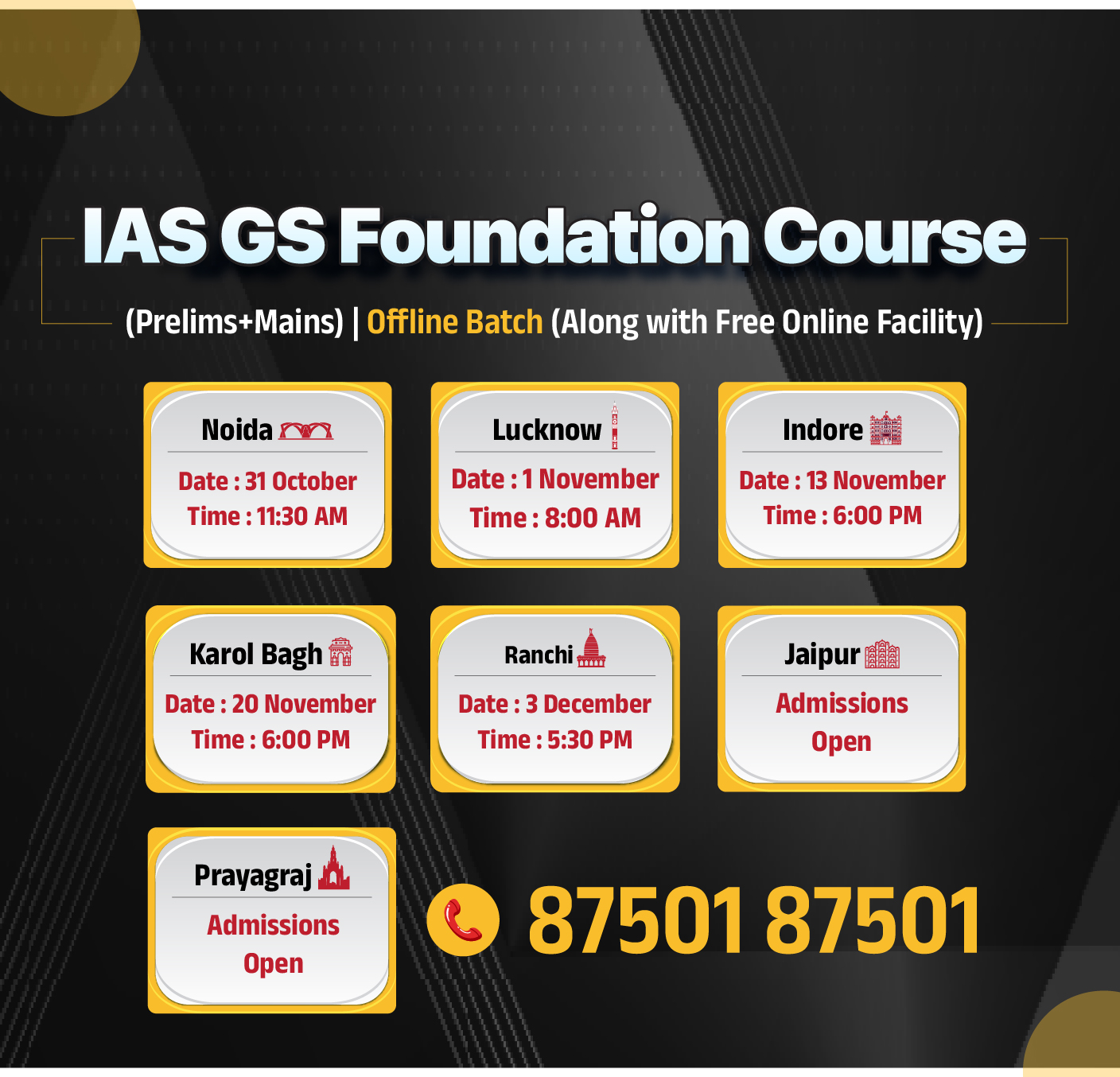
Rapid Fire
India's Maiden Private Rocket Launch
India’s first-ever private commercial satellite launch will be conducted by Hyderabad-based Skyroot Aerospace in January 2026.
- This launch will make Skyroot the only Indian entity besides Indian Space Research Organisation (ISRO) to successfully launch a rocket carrying satellites into space.
- Skyroot Aerospace became India’s first private company to launch a rocket with the Vikram-S suborbital mission in November 2022, marking a turning point in India’s space privatisation efforts.
- Skyroot’s mission follows the Government of India’s 2020 decision to open the space sector to private players.
- The Indian National Space Promotion and Authorization Centre (IN-SPACe), established in June 2020, serves as an independent nodal body under ISRO to promote, guide, and authorize private participation in India’s space sector.
- India’s private space sector has 200+ startups and is projected to reach $44 billion by 2033.
- Skyroot’s positioning to meet global small satellite launch demand marks a significant step toward affordable access and a new phase in India’s commercial space sector.
| Read more: India's First Private Launch Vehicle |


Rapid Fire
Foreign Liabilities and Assets (FLA) Census 2024-25
According to the Reserve Bank of India’s 2024–25 Foreign Liabilities and Assets (FLA) census, the US and Singapore together contributed over one-third of India’s total Foreign Direct Investment (FDI), reaffirming their position as India’s top investment partners.
FDI in India
- Top Investors: The US (20%) and Singapore (14.3%) together contributed over one-third of total FDI, followed by Mauritius, the UK, and the Netherlands.
- Foreign Dominance: More than 75% of FDI-reporting firms were foreign subsidiaries, reflecting strong overseas ownership and technology inflows.
- Sectoral Focus: Manufacturing attracted the highest FDI (48.4% market value), followed by services, aligning with India’s industrialisation goals.
- Rising Inflows: Total FDI stock rose to Rs 68.75 lakh crore in FY25, up from Rs 61.88 lakh crore in FY24, marking an 11.1% annual growth. showing steady confidence in India’s economy.
- Outward Expansion: Outward Direct Investment (ODI) (domestic firm expands its operations to a foreign country) stood at Rs 11.66 lakh crore, with top destinations being Singapore, US, UK, and Netherlands.
- ODI growth (17.9%) outpaced FDI growth (11.1%), reducing the inward-to-outward DI ratio from 6.3 to 5.9 times year-on-year.
- Industrial Strength: Non-financial companies held over 90% of total FDI equity, showing dominance of core sectors.
| Read more: RBI Annual Report 2024-25 |


Rapid Fire
Patriot Air Defense System
Ukraine has received additional Patriot air defence systems from Western allies, particularly Germany, to counter intensifying Russian missile and drone attacks.
Patriot Air Defense System
- About: PATRIOT stands for Phased Array Tracking Radar for Intercept on Target, developed by Raytheon Technologies.
- The Patriot system, manufactured in the U.S., is among the most advanced anti-missile platforms globally, with Germany as its largest supplier to Ukraine.
- It’s a mobile surface-to-air missile system in service since the 1980s and used for intercepting aircraft, ballistic missiles, and cruise missiles.
- Technical Capabilities: It can detect targets over 150 km away and reach heights of 20 km, offering defense coverage of 15–20 km against incoming missiles.
- Global Operators: It is used by 16 nations, including Germany, Japan, Israel, South Korea, Saudi Arabia, and Poland.
Air Defence Systems Around the World
|
Country |
Air Defence Systems |
|
India |
Akash System, Prithvi Air Defence (PAD), QRSAM (Quick Reaction SAM). |
|
USA |
Golden Dome Missile Defense System (proposed), Patriot, THAAD (Terminal High Altitude Area Defense), NASAMS (National Advanced Surface-to-Air Missile System), Avenger System. |
|
Russia |
S-400 “Triumf”, S-500 “Prometey”, Buk and Tor Systems. |
|
China |
HQ-9, HQ-16, HQ-22, HQ-19 |
|
Israel |
Iron Dome, David’s Sling, Arrow 2 and Arrow 3. |
| Read More: India’s Advancements in Ballistic and Air Defence Systems |

